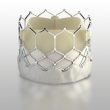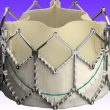Transcatheter aortic valve replacement (TAVR) in low-risk patients has been shown to be superior or noninferior in randomized studies, but the presence of valvular thrombosis, in its different forms, has not been well analyzed, nor is there much information on its impact on evolution. Researchers conducted an analysis of the LTR study that included 200...
EuroPCR 2023 | TAVR in TAVR Results with Balloon-Expandable Valves
With the expansion of transcatheter aortic valve replacement (TAVR) use in the low-risk population, more patients will need repeat valve replacement in the future, making it paramount to understand the performance of repeat TAVR. Currently, this information is limited. The aim of this study was to analyze the real-world experience of performing a second TAVR...
Differences in Events Between MINOCA and MIOCA Patients: Contemporaneous Cohort Analysis
Sex-related MINOCA and MIOCA differences. Several international guidelines recommend invasive treatment after diagnosing an acute coronary syndrome (ACS). The first studies that described acute myocardial infarction (AMI) without obstructive epicardial coronary disease reported a 10% incidence rate. Based on this significant prevalence, it was recommended that this diagnosis be classified as MINOCA for patients who...
The most read scientific articles in interventional cardiology in March on our website
Below, we share March’s most read scientific abstracts in interventional cardiology at solaci.org. ACC 2023 | YELLOW III Study. Effect of Evolocumab on Coronary Plaque Characteristics in Stable Coronary Artery Disease Dr. Kini presented the results of the YELLOW III Study where she analyzed the effect of evolocumab on coronary plaque in patients with stable...
Vascular Ultrasound in Percutaneous Closure Devices: Subanalysis of the UNIVERSAL-Trial
Analysis of percutaneous closure device placement when choosing an ultrasound-guided vs. a fluoroscopy-guided femoral approach. Transradial access is the access of choice in percutaneous coronary interventions, with a demonstrated benefit in mortality and bleeding when compared with transfemoral access. The latter, however, is still the access of choice in cases where large caliber introducers are...
The Most Important Articles of 2022 in Structural Heart Disease
Discover the most read scientific articles on interventional cardiology of 2022 in our website. We Should Treat Significant Stable CAD in Patients Undergoing TAVR Aortic stenosis is associated to significant coronary artery disease (CAD) in nearly 50% of cases. When we decide to treat aortic disease using surgery, it has been established we should also treat...
Real-World Results of Different Devices for TAVR
Transcatheter aortic valve replacement (TAVR) keeps growing in terms of the development of new devices, more extensive operator experience, and enhanced procedure planning. Nowadays, there are multiple device options, which depend on patient characteristics and operator experience. Two-arm studies compared these devices, analyzing the potential benefits of a certain valve over the others. This multicenter...
Valve-in-Valve Shows Good Evolution after 2 Years
The degeneration of bioprostheses in aortic position occurs at approximately after 10 to 15 years. In this scenario, the treatment of choice used to be redo surgery, but with the evolution of transcatheter aortic valve replacement (TAVR), it became a valid alternative with a level IIa B evidence. While there are currently multiple analyses of...
SURTAVI at 5 Years
Transcatheter aortic valve replacement (TAVR) by transfemoral access has shown great benefit for different risk groups, but its long-term durability is still uncertain. Available evidence comes from small analysis and a single randomized trial with 280 patients and an 8 year follow-up: the NOTION Trial, where TAVR showed less valvular degeneration than aortic valve replacement (AVR) surgery....
TCT 2022 | PROTECTED TAVR
Stroke is still a major complication of transcatheter aortic valve replacement (TAVR), with a 30-day mortality of 16.7%. Even in the absence of symptoms, most patients (68-93%) have some type of diffusion imaging defect after TAVR implantation. The Sentinel cerebral protection device (CPD) (Boston Scientific) received FDA approval for the capture of emboligenic material that...









